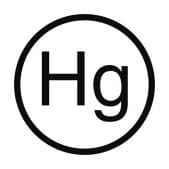A6656
Anti-Human IgG (γ-chain specific)−Agarose antibody produced in goat
IgG fraction of antiserum, saline suspension
Sign Into View Organizational & Contract Pricing
All Photos(1)
About This Item
MDL number:
UNSPSC Code:
12352203
biological source
goat
conjugate
agarose conjugate
antibody form
IgG fraction of antiserum
antibody product type
secondary antibodies
clone
polyclonal
form
saline suspension
species reactivity
human
extent of labeling
≥5 mg per mL
technique(s)
Ouchterlony double diffusion: suitable
capacity
0.6 mg/mL binding capacity
storage temp.
2-8°C
target post-translational modification
unmodified
General description
Human IgGs are glycoprotein antibodies that contain two equivalent light chains and a pair of identical heavy chains. IgGs have four distinct isoforms, ranging from IgG1 to IgG4. These antibodies regulate immunological responses to allergy and pathogenic infections. IgGs have also been implicated in complement fixation and autoimmune disorders.
Goat anti-human IgG (γ-chain specific)-agarose antibody is specific for human IgG when tested against purified human IgA, IgG, IgM, Bence Jones kappa, and Bence Jones lambda myeloma proteins.
Goat anti-human IgG (γ-chain specific)-agarose antibody is specific for human IgG when tested against purified human IgA, IgG, IgM, Bence Jones kappa, and Bence Jones lambda myeloma proteins.
Immunogen
human IgG
Application
Goat anti-human IgG (γ-chain specific)-agarose antibody has been used for immunocapture assays. It can also be used for Ouchterlony double diffusion assays.
IgGs were depleted from normal human serum by incubation with 50 μl of agarose-linked rabbit anti-human antibody (A3543) for 90 minutes at 4°C.
Physical form
Suspension in 0.5 M NaCl containing preservative
Disclaimer
For U.S. Customers: Contains mercury; Do not place in trash - dispose according to local, state, or federal laws.


Unless otherwise stated in our catalog or other company documentation accompanying the product(s), our products are intended for research use only and are not to be used for any other purpose, which includes but is not limited to, unauthorized commercial uses, in vitro diagnostic uses, ex vivo or in vivo therapeutic uses or any type of consumption or application to humans or animals.
Not finding the right product?
Try our Product Selector Tool.
Storage Class Code
12 - Non Combustible Liquids
WGK
WGK 3
Flash Point(F)
Not applicable
Flash Point(C)
Not applicable
Choose from one of the most recent versions:
Already Own This Product?
Find documentation for the products that you have recently purchased in the Document Library.
J L Viallard et al.
Clinical chemistry, 36(11), 2000-2003 (1990-11-01)
We report an abnormal pattern for enolase (EC 4.2.1.11) isoenzymes in the serum of a patient with squamous cell lung carcinoma. The alpha alpha-isoenzyme was present but the alpha gamma form was not detected, and near the point of application
J Raper et al.
Infection and immunity, 67(4), 1910-1916 (1999-03-20)
Natural resistance of humans to the cattle pathogen Trypanosoma brucei brucei has been attributed to the presence in human serum of nonimmune factors that lyse the parasite. Normal human serum contains two trypanosome lytic factors (TLFs). TLF1 is a 500-kDa
C Papadea et al.
Critical reviews in clinical laboratory sciences, 27(1), 27-58 (1989-01-01)
Human IgG consists of two identical heavy (H) chains and two identical light (L) chains joined by interchain disulfide bridges. Heterogeneity in the amino acid sequences of the H and L polypeptides results in at least three types of IgG
F Cataldo et al.
Minerva pediatrica, 42(12), 509-514 (1990-12-01)
IgG are the most common isotype of Ig and include four subclasses which differ from one another in the following ways: their initial amino acid sequence, their physical and chemical properties and the different serum concentrations reached with age. Every
Our team of scientists has experience in all areas of research including Life Science, Material Science, Chemical Synthesis, Chromatography, Analytical and many others.
Contact Technical Service